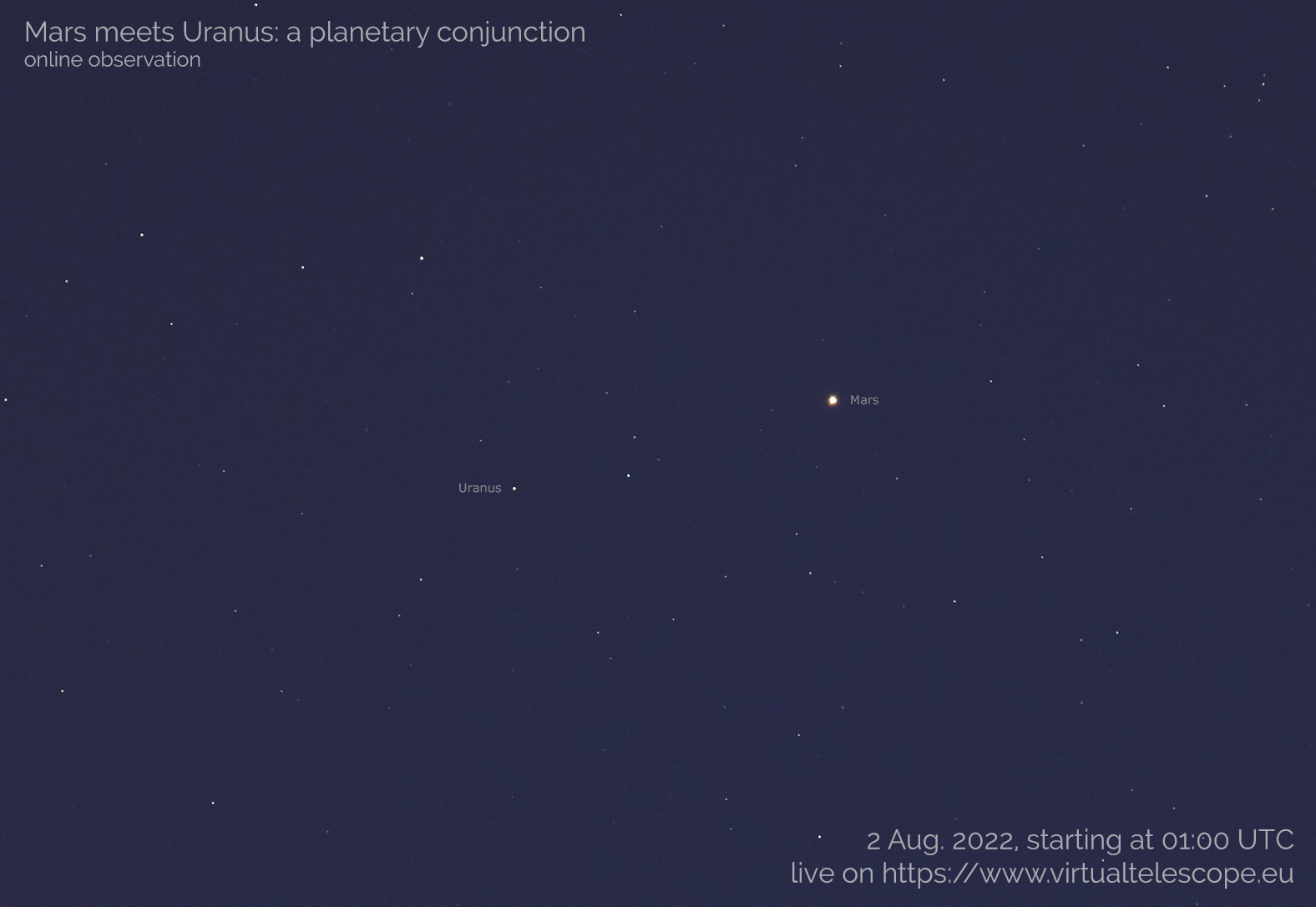Mars and Uranus will line up in a rare 'planetary conjunction' this weekend. Here's how to watch.
It's a rare opportunity to see the Red Planet and the green planet in the same binocular field of view.

This weekend, Mars and Uranus will appear just two widths of a full moon apart as they go into a rare planetary conjunction in the constellation of Aries.
It's a rare opportunity to see dim Uranus, which is typically hard to find in the night sky, but also to glimpse a brightening Mars.
Use any pair of binoculars and it will be possible to see both planets in the same field of view.
The fourth and seven planets from the sun won't really be close to each other. In fact, they'll be about 1.6 billion miles (2.6 billion kilometers) from each other, but in the early hours of Monday, Aug. 1 they will appear just over 1 degree apart in the night sky.
Related: Dazzling photos of the solar eclipse from Antarctica
When and where to see the Mars-Uranus conjunction
The moment of closest conjunction will vary according to your exact location, but any night this weekend and into early next week will offer spectacular views of Mars and Uranus in conjunction. They will rise together in the east around midnight local time as seen in the Northern Hemisphere and be visible high in the southeast until about two hours before sunrise.
Look around 1:00 a.m. local time where you are, with the very closest conjunctions visible early on Monday (Aug. 1) and Tuesday (Aug. 2).
Get the world’s most fascinating discoveries delivered straight to your inbox.
You should also be able to see the Pleiades — the brightest open cluster of stars in the night sky — close to the two planets.
How to see the Mars-Uranus conjunction
Although it's technically possible for some stargazers to see Uranus with the naked eye under perfectly dark conditions, it's a much better bet to use binoculars or a small telescope. Binoculars will reveal both planets in the same field of view. Mars will appear reddish while Uranus a blue-green hue.
Another option is to watch a live webcast by the Virtual Telescope Project, which will be broadcasting live views of the Mars-Uranus conjunction through a telescope from Rome, Italy at 9 p.m. EDT on Aug. 1 (01:00 UTC on Aug. 2).
Why Mars is brighter than Uranus
The two planets will not be the same brightness during their conjunction. Mars is gradually brightening in the night sky as it gets closer to Earth and will this weekend it will shine at a magnitude of 0.2, which is about the same as a bright star. It will be about 130 million miles (208 million km) from Earth. That's a lot closer than the much larger ice-giant Uranus, which will be a whopping 2 billion miles (3.2 billion km) distant and will shine at a magnitude of just 5.8. That's right on the limit of naked-eye visibility.
The outer planets and opposition
Mars is now getting brighter because it's waxing toward its opposition, which is when Earth is between a planet and the sun. As a result, that planet looks its brightest and is visible all night. All outer planets from Earth come to opposition in our night sky. Since Mars takes 687 Earth days to orbit the sun — roughly two Earth years — the Red Planet comes to opposition every 26 months. That will next happen on Dec. 8, when Mars will reach a brightness magnitude of -1.9 — about the same as Sirius, the brightest star in the night sky.
The much slower Uranus, which takes 84 Earth years to make one orbit, comes to opposition once per Earth year. Uranus is next at opposition on Nov. 9, but its massive distance from us means even then it will only shine at a magnitude of just 5.7.
Uranus never gets big or bright for us Earthlings, which is why this weekend's conjunction with Mars is a rare opportunity to find the seventh planet with your own eyes.
Originally published on Live Science.

Jamie Carter is a freelance journalist and regular Live Science contributor based in Cardiff, U.K. He is the author of A Stargazing Program For Beginners and lectures on astronomy and the natural world. Jamie regularly writes for Space.com, TechRadar.com, Forbes Science, BBC Wildlife magazine and Scientific American, and many others. He edits WhenIsTheNextEclipse.com.


